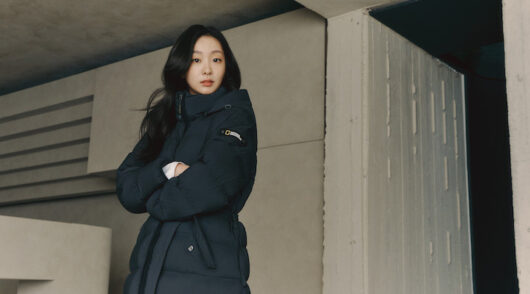Baffled by fashion? French fashion consultant Jean Jacques Picart can simplify it for you.
For the past several seasons, he told the Westfield World Retail Study Tour, fashion has been undergoing a sea change.
Brought on by the GFC, consumer fatigue (caused by excess – too many brands, too many stores), tough financial times, and a new generation of consumers who are different from their parents.
Enter a new era of fashion, characterised by a new guard of designers, from Alexander Wang, and Valentino, to Tom Ford.
And according to Picart, this new chapter in fashion and retail will be very different.
So just who is Picart to make these claims?
At 65 years of age, Picart is renowned in the French fashion world, having run his own publicity agency throughout the 70s and 80s doing work for the likes of Thierry Mugler, Cacharel, Shiseido, Hermès, Kenzo, Chloé, Levi’s, Helmut Lang, Ferragamo, Jill Sander and Jean Patou, where he launched younger designer Christian Lacroix in 1981.
He is credited with creation of Maison de Haute Couture Christian Lacroix, and in 2012 works as a consultant to young designers and fashion houses, having self published his own book on French fashion over the last four decades.
But onwards to his predictions for the future.
Picart said that in particular, there are two new values that define fashion in the now – creativity and integrity.
Creativity
With businesses such as Fast Retailing, Inditex, and H&M imposing their own business models and success upon the fashion market, globalisation and internationalisation has contributed to a model where fashion is everywhere, leading to a standardisation, Picart observes.
“Even if that standardisation is to remain the foundation of the world system, there is a new place to be claimed for everything that is different, original, personal, special, rare and unique, to the point where in mature markets, fashion-wise, every woman and man are becoming his or her own stylist.
“They chose from a multitude of collections those pieces that express their difference, personality, and unique identity, therefore, fashion is becoming less and less imposed by bands, and more and more inspired, clamoured for and fuelled by consumers who know better than before what they want and especially what they don’t want,” he said.
Today’s new fashion desires and expectations are driven by what is different, original, and personal – what Picart terms “fashion’s new challenge”.
This means that for brands, it’s no longer so much a matter of placing creativity in the service of marketing, but instead, that marketing now accompanies creativity.
“There is a new mandatory balance between the two.
“Creativity and marketing are not so much opposing forces, they have become friendly accomplices.”
Integrity
With the new forms of communication technology, and information available at our fingertips, today’s consumers are over-informed.
They are curious about everything, they compare, and are extremely vigilant.
It has become impossible to pull the wool over consumers’ eyes, and celebrity is no longer a compelling enough reason to run out and buy a new handbag.
Mergers and acquisitions make the fastest fortunes, but also the most fragile ones. Spending power is on the decline everywhere, and for everyone.
“There is a new delicate challenge that brands must meet if they want to please and succeed,” says Picart.
“The game is no longer about knowing how to create desire, now brands must also know how to overcome buyers guilt when consumers take out their credit card.
“Today when a woman or man passes in front of a shop window and says to themselves, I love that bag, immediately in the next instant they also wonder ‘how much do I want it and at what price? Isn’t there something else that I should spend the money on instead of this bag’?”
As a result, Picart says that all products, at every price level, must be sufficiently creative to generate desire, but must also convey with clarity, that they are worth the price.
“The new integrity and honesty are making it necessary for brands to exercise the notion of absolute respect – respect for who they are, what they sell, how they sell, and why they sell,” he advises.
This is no longer an expectation on the part of the customers, it’s a demand. Fashion items must be weighted with more morality.
“Fashion today calls for more meaning and sensibility in order to be credible and more attractive.”
Any addiction to the system excesses, he says, for example media overexposure or the politics of capsule collections and co-branding, are perceived as artificial and outdated by the consumer.
“Being different is what it is all about now. All of us are aware that the most important thing is to be comfortable with oneself, happy with life, and at ease with one’s own style.
“Each of us can find our own style that optimises our physical attributes, and show them to our best advantage.
“In the quest for style, reason wins out over fashion, but it doesn’t exclude creating novelty or buying something you just can’t live without.
“Having style means conquering fashion and true to yourself.”
The new luxury
With society having come from the last century of aristocratic luxury, to the democratic luxury of the past 20 years, Picart says the fashion world is now seeing the emergence of the ‘new luxury’.
That is, a luxury whose chief characteristic is to go against the rules usually associated with the word luxury.
“This new luxury picks up on the classic definition: luxury is what is acceptable for me, and not necessarily for the others,” Picart explained to the Westfield Tour.
“What takes me out of my day to day life? The difference being that the new luxury does not only apply to buying rare and exceptional objects, but it is more about creating a new life choice to provide maximum pleasure.
“This might be buying a piece of bespoke clothing and waiting longer to have it, taking a day off in the middle of the week, buying a pastry from a specific shop, or saving up for a week long dream vacation for the family.
“Brands are going to find it more difficult to influence the consumer, and many will be left behind.
“They will really need to seduce the consumer in all sincerity.”
He said those within fashion will be required to reconnect with their customers.
“Fashion professionals will have to learn the seductive power of the sincere discourse, the impact of a natural smile, the charm of honest communication, and the power of attraction and creativity.
“Quite simply, we must not forget a dress is not made to be admired or photographed, it is made to be worn, and to make the woman who chooses to wear it more beautiful.”
The future of fashion
With so much talk of e-commerce being the death of fashion and the retail store, one would be unsurprised to hear Picart lambast the trend, however, he believes just the opposite.
“Go to the boutique, touch the material, try some jackets, but order online, because you will be comfortable and you don’t have a sales member on your back saying “look at that dress madame, I swear it is best!”.
“But I’m sure ideally, the future is a combination of both.
“Retailers must be more than ever advisors – almost a kind of friend. It is easy to say I will buy on the internet, except if you feel lost, or you don’t have a clear vision of what is best for you.
“In that case, you go into the store and ask for advice and help, and that is going back to the former way of being a true retailer.
“Give the feeling of the store being your home and welcome customers as if they are friends in your home. Then they will feel secure and not guilty to buy, because they will be sure that you have recommended the best pieces for who they are, going back to the notion of personal service.”
* This feature first appeared in the June/July 2012 edition of Inside Retail Magazine. For more stories like this, subscribe to Inside Retail Magazine’s bi-monthly print edition here.





